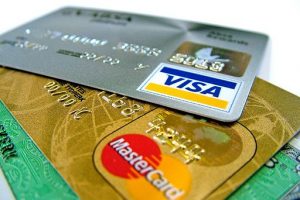Traveling with money is always a challenge, because there are twice as many ways to lose money as there are forms of payment. Not only can you just misplace it or leave it behind, but you’re also at risk of pickpockets and thieves, especially if you travel outside the United States.
So here are a few tips for managing your money while traveling on business, especially if you travel overseas.
Get a compatible credit card. The card you already carry may be used internationally with a simple call to the company to alert them of your travels, but a growing number of European and Asian countries now require a card with a built-in chip. If you are traveling on business and your company doesn’t supply you with a credit card for expenses, make sure your personal line of credit can be accessed without penalty. Then, get a personal card to be used only for business expenses, one that lets you rack up airline or hotel points. Additionally, use this card whenever possible, rather than making cash withdrawals overseas. Not only are the fees higher, the exchange rate is less favorable when you exchange it yourself.
Consider on-body storage. You may have been told that money belts are a safe way to carry money, but an experienced thief can recognize them immediately (hint: nobody wears a belt that thick). Instead, money belts and fanny packs broadcast to thieves that you’re not a local, which could increase your odds of being a victim. Consider a money pouch that hangs on your belt inside your pants, or a wallet that hangs around your neck inside your shirt. Just don’t go digging through it when you have to pay for an item; the whole point of on-body storage is for it to be a secret!
Divide your cash. Divvy your cash up between several locations on your body and in your bag. Keep your smaller bills in one pocket so you don’t have to access your storage to purchase small items, like souvenirs or snacks.
Make more withdrawals. While it saves on exchange fees to limit the number of times you withdraw cash or change it into the local currency, taking out smaller amounts at a time makes it easier to manage and leaves you with less to lose, should you lose your money.
Purchase a dummy wallet. This will serve as a decoy wallet, so you have something to leave behind should you find yourself in a scary situation. Put a few small bills in it, and even use the sample credit cards you get in the mail to make it look real enough for a thief to take as bait. The goal is to give you something to ditch to get away from the dangerous situation.
Trim your wallet. There’s no point in taking every credit card and rewards card you own. Your ID, your credit card, and your insurance cards should be sufficient. There will also be less for you to replace should your wallet or purse is stolen.
Reserve a wallet specifically for travel. When you trim your wallet, the pockets will loosen up, which means the remaining cards won’t fit as tightly, and could fall out during normal use. Rather than risk it, get a new, smaller wallet for traveling. Then, just transfer your ID, credit cards, and insurance cards before you leave.
Use money alternatives. Try to pre-buy certain items for your trip, so you can reduce the number of times you have to pull out your wallet. For example, buy transportation passes rather than paying for tickets with cash or a credit card. They’re prepaid, easy to store in a pocket, and reduce the number of times your wallet has to come out.
How do you carry your money when you travel? Share your ideas with us in the comments below, on our Facebook page, or in our Twitter stream.
Photo credit: MaxPayne473 (Wikimedia Commons, Creative Commons 4.0)

